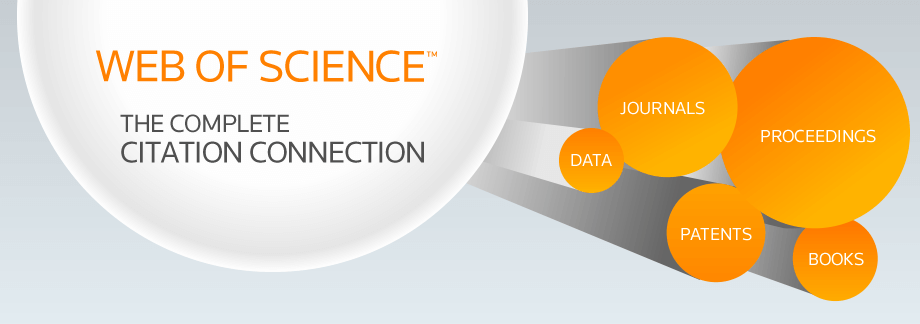INTERNATIONAL JOURNAL OF CREATIVE RESEARCH THOUGHTS - IJCRT (IJCRT.ORG)
International Peer Reviewed & Refereed Journals, Open Access Journal
IJCRT Peer-Reviewed (Refereed) Journal as Per New UGC Rules.
ISSN Approved Journal No: 2320-2882 | Impact factor: 7.97 | ESTD Year: 2013
Call For Paper - Volume 13 | Issue 11 | Month- November 2025
Scholarly open access journals, Peer-reviewed, and Refereed Journals, Impact factor 7.97 (Calculate by google scholar and Semantic Scholar | AI-Powered Research Tool) , Multidisciplinary, Monthly, Indexing in all major database & Metadata, Citation Generator, Digital Object Identifier(CrossRef DOI)
Contact Us Click Here
WhatsApp Contact Click Here
Volume 12 | Issue 6
| IJCRT Journal front page | IJCRT Journal Back Page |
Paper Title: Detection Of Thyroid Stages Classification By Using Convolution Neural Network Techniques
Publisher Journal Name: IJCRT
Your Paper Publication Details:
Published Paper ID: - IJCRT2406232
Register Paper ID - 263192
Title: DETECTION OF THYROID STAGES CLASSIFICATION BY USING CONVOLUTION NEURAL NETWORK TECHNIQUES
Author Name(s): N. SANDHIKA, Dr. D. RAJINIGIRINATH, S. P. AUDLINE BEENA
Publisher Journal name: IJCRT
Volume: 12
Issue: 6
Pages: c135-c140
Year: June 2024
Downloads: 157
Abstract
Thyroid disorders are prevalent endocrine diseases affecting millions of people worldwide. The accurate and timely classification of thyroid stages is crucial for effective diagnosis and treatment. In recent years, convolutional neural networks (CNNs) have emerged as a powerful tool for image recognition and classification tasks. The proposed methodology involves a multi-step process. First, a comprehensive dataset of thyroid images representing different stages is compiled and pre-processed for training and validation purposes. Next, a CNN architecture is designed, comprising multiple layers of convolutions, pooling, and fully connected layers. The model leverages the capability of CNNs to automatically learn and extract relevant features from the input images, making it well-suited for medical image analysis tasks. The training of the CNN is conducted using a large-scale dataset to optimize its performance and generalization ability. The model is fine-tuned through an iterative process to achieve the highest possible accuracy and precision for thyroid stage classification.
Licence: creative commons attribution 4.0
License
Keywords
Detection Of Thyroid Stages Classification By Using Convolution Neural Network Techniques
License
Paper Title: PRECISION AGRICULTURE USING IOT AND CROP PREDICTION SYSTEM
Publisher Journal Name: IJCRT
Your Paper Publication Details:
Published Paper ID: - IJCRT2406231
Register Paper ID - 263137
Title: PRECISION AGRICULTURE USING IOT AND CROP PREDICTION SYSTEM
Author Name(s): Mr. Jayesh Salve, Dr. Yogesh Angal
Publisher Journal name: IJCRT
Volume: 12
Issue: 6
Pages: c129-c134
Year: June 2024
Downloads: 170
Abstract
Agriculture is vital to India's economy but is currently hindered by major challenges such as deteriorating soil fertility, inefficient resource utilization, and limited technology adoption. Intensive agricultural practices, excessive use of chemical fertilizers, and inadequate soil management have led to significant soil degradation and nutrient loss. Water scarcity and unpredictable rainfall further compound these problems, with traditional farming methods often resulting in wasted resources and reduced crop yields. The integration of Internet of Things (IoT) technology in soil fertility monitoring provides a promising solution. IoT systems use smart sensors to continuously monitor crucial soil parameters like nutrient levels, moisture, temperature, and pH in real-time. This data-centric approach improves soil health monitoring, optimizes the use of fertilizers and water, and promotes sustainable farming practices. Additionally, advanced analytics and machine learning can forecast soil health trends, allowing for proactive soil management. By adopting IoT technology, Indian agriculture can enhance soil management, increase resource efficiency, and boost productivity, ensuring food security and economic stability for millions of farmers.
Licence: creative commons attribution 4.0
License
Keywords
Internet of Things, Sensors, Machine Learning, Agriculture
License
Paper Title: Early Stage Detection Of Glaucoma Illness By Deep Learning Approach Forecasting
Publisher Journal Name: IJCRT
Your Paper Publication Details:
Published Paper ID: - IJCRT2406230
Register Paper ID - 263078
Title: EARLY STAGE DETECTION OF GLAUCOMA ILLNESS BY DEEP LEARNING APPROACH FORECASTING
Author Name(s): G.Akalya, Dr.D.Rajinigirinath, T.Saranya
Publisher Journal name: IJCRT
Volume: 12
Issue: 6
Pages: c122-c128
Year: June 2024
Downloads: 155
Abstract
Glaucoma is a chronic eye disease that is the second leading cause of blindness all over the world, and a great number of people have been experiencing it. Glaucoma is a group of diseases that cause damage to the optic nerves,which leads to irreversible partial or fullvision loss. Early detection of glaucoma is critical and highly beneficial in preventing further deterioration. Glaucoma can occur at any age and shows no early signs or symptoms, which makes it hard to detect. The final stage leads to complete blindness, and a cure has not been found as of now. So, the only way is to slow down the effects by detecting them at an early stage. And another major drawback is the limited number of glaucoma specialists in our country, which makes it even more difficult to diagnose. Due to these reasons, the project focuses on developing an Android application that takes the fund us image as an input and then predicts whether it is glaucomatous or non- glaucomatous. This system is developed using the CNN algorithm in deep learning, which includes dataset collection, sequential model development,training,testing,model conversion,and application UIdevelopment.The accuracy of this model is found to be around 97%, and there are fewer false positives compared to the previous models. This project can be extended so that it can be used on multiple operating systems and be accessible through a web version. In the future, the fund us image can be extracted from the general eye image itself.
Licence: creative commons attribution 4.0
License
Keywords
Early Stage Detection Of Glaucoma Illness By Deep Learning Approach Forecasting
License
Paper Title: A STUDY TO ASSESS THE EFFECTIVENESS OF THE MATERNAL POSITIONING ON FINDINGS OF THE FETAL PARAMETERS DURING THE NON-STRESS TEST AT THE SELECTED HOSPITAL OF THE SOUTH GUJARAT
Publisher Journal Name: IJCRT
Your Paper Publication Details:
Published Paper ID: - IJCRT2406229
Register Paper ID - 263431
Title: A STUDY TO ASSESS THE EFFECTIVENESS OF THE MATERNAL POSITIONING ON FINDINGS OF THE FETAL PARAMETERS DURING THE NON-STRESS TEST AT THE SELECTED HOSPITAL OF THE SOUTH GUJARAT
Author Name(s): Mrs. Darshna Gavli, Mrs. Mayuri Patel
Publisher Journal name: IJCRT
Volume: 12
Issue: 6
Pages: c109-c121
Year: June 2024
Downloads: 153
Abstract
Introduction: The non-stress test (NST) is a simple, noninvasive way of checking on your baby's health. The test, sometimes called a cardiotocography, records your baby's movement, heartbeat, and contractions. It notes changes in heart rhythm when your baby goes from resting to moving, or during contractions if you're in labor. Your baby's heart should beat faster when active just like yours. The NST can reassure you that your baby is healthy and getting enough oxygen. It's called a non -stress test because the test won't bother your baby. Your doctor won't use medications to make your baby move. The NST records what your baby is doing naturally. Objectives: 1). To assess the of fetal parameters during non-stress test. 2). To assess the effectiveness of maternal positioning on findings of the fetal parameters during non-stress test. 3). To assess the association between fetal parameters with the demographical variable. Method: An quantitative approach with pre-experimental one group short case study research design was adopted for this study. The sample comprised of 60 antenatal mothers. Sample was selected by using purposive sampling technique. Data collection was done from 14nd February to 20th February at Shree Janani hospital Dharmpur and 2 march 2020 to 22 march 2020 at Shrimad Raj Chandra hospital Dharmpur data was collected by using numerical scale. Data was analyzed using descriptive and inferential statistics. Result: In all the three position the fetal heart rate was normal from the range 100-160 b/m. The fetal movement are easily observed in left lateral position (42) participants and less observe in supine position (47) participants and for the number of accelerations the normal result found in the semi-setting position (45) participants. Thus, investigator concluded that the experimental study is good method of providing left lateral maternal positioning during non-stress test. Interpretations and conclusion: In all the three position the fetal heart rate was normal from the range 100-160 b/m. The fetal movement are easily observed in left lateral position (42) participants and less observe in supine position (47) participants and for the number of accelerations the normal result found in the semi-setting position (45) participants. Thus, investigator concluded that the experimental study is good method of providing left lateral maternal positioning during non-stress test.
Licence: creative commons attribution 4.0
License
Keywords
DF(Degree of freedom), NST(Non-stress test), S( Significant) NS(Non-significant) H(hypothesis) n(sample size)
License
Paper Title: Android Timer-Based Phone Silencer
Publisher Journal Name: IJCRT
Your Paper Publication Details:
Published Paper ID: - IJCRT2406228
Register Paper ID - 263333
Title: ANDROID TIMER-BASED PHONE SILENCER
Author Name(s): Sayali Sanjeev Dalimbakr, Pratiksha Padolkar, Priyanka Mane, Tushar Shelake, Ass. Prof P. R. Telshinge
Publisher Journal name: IJCRT
Volume: 12
Issue: 6
Pages: c104-c108
Year: June 2024
Downloads: 198
Abstract
Many locations, including hospitals, universities, corporate offices, etc., have prominent signs that read "KEEP YOUR MOBILE PHONES SILENT!!" It is common for people to forget to place their phones in "Silent Mode," even though it isn't always possible--for example, during important meetings or presentations. Almost fully automated profile switching will be available via an Android app for automated profile switching. This application will enable the device to go into silent mode based on the data users enter into the database, based on what they need.
Licence: creative commons attribution 4.0
License
Keywords
Auto Silent, Silent modes, automatic profile switching
License
Paper Title: A hookworm Ancylostoma (Ancylostoma) caninum from a canid Canis aureus in Himachal Pradesh
Publisher Journal Name: IJCRT
Your Paper Publication Details:
Published Paper ID: - IJCRT2406227
Register Paper ID - 263372
Title: A HOOKWORM ANCYLOSTOMA (ANCYLOSTOMA) CANINUM FROM A CANID CANIS AUREUS IN HIMACHAL PRADESH
Author Name(s): Rakesh Chandel, Vandana Sharma
Publisher Journal name: IJCRT
Volume: 12
Issue: 6
Pages: c100-c103
Year: June 2024
Downloads: 178
Abstract
A hookworm belonging to the genus Ancylostoma (Dubini,1843) isolated from the small intestine of a canid Canis aureus (Linnaeus) which was found dead from a new host locality, village Kandraur district Bilaspur Himachal Pradesh. The worm is bent dorsally, cuticle transversely striated; buccal capsule large with three pairs of ventro-lateral teeth and two lancets in the deep of the buccal capsule; dorsal ray forked distally each branch further trifurcates; genital cone oboid with two pairs of genital papillae; spicules equal, long filamentous, 0.650-0.765 mm long with tapering tips; gubernaculum 0.144-0.180 mm long; vulva in the posterior third of the body 3.240-3.510 mm from the tip of tail; tail conical with a spine at the tip 0.006 mm long . This zoonotic worm is transmitted orally or percutaneously, causing a disease ancylostomiasis in humans, domestic and wild animals. The main symptoms of ancylostomiasis are mucous haemorrhagic diarrhoea and anaemia.
Licence: creative commons attribution 4.0
License
Keywords
hookworm, Ancylostom caninum, canid Canis aureus, Himachal Pradesh
License
Paper Title: A RESEARCH ON: FORMULATION AND EVALUATION OF TOOTH POWDER USING HERBAL INGREDIENTS.
Publisher Journal Name: IJCRT
Your Paper Publication Details:
Published Paper ID: - IJCRT2406226
Register Paper ID - 263335
Title: A RESEARCH ON: FORMULATION AND EVALUATION OF TOOTH POWDER USING HERBAL INGREDIENTS.
Author Name(s): Waghmare Jagdish Atmaram, Gaikwad Dipak Bhaskar, Sonwane Abhishek Ashok, Ghuge Aashwini Raosaheb
Publisher Journal name: IJCRT
Volume: 12
Issue: 6
Pages: c81-c99
Year: June 2024
Downloads: 292
Abstract
Dentifrices are the product which is used to maintain the oral hygiene such as Freshness of mouth and to avoid tooth decay. The oral hygiene can be maintained throughout the day by using various dentifrices prepared by herbal and synthetic ingredients. This work was carried out to prepare Tooth powder which can be used as a tool for proper oral hygiene and to overcome the side effect of the conventional Tooth powder prepared by synthetic ingredients. Dentifrices are important in our daily life to maintain good oral health and hygiene. Gingivitis, plaque, Periodontal diseases are the crucial problems related to tooth. These major issues are due to poor oral hygiene and negligence in good caring of tooth. This negligence encourages plaque formation on teeth, by causing inflammation of gum tissues which ultimately leads to gingivitis and tooth loss. Most of the synthetic preparations of dentifrices, such as toothpowder and toothpaste cause side effects such as gum irritation, burning sensation and inflammation due to usage of chemicals. In this study an attempt is made to dispense an alternative to the users by formulating herbal toothpowder using Clove, Ginger, Amla, Neem Bark, Accacia Bark, Mentha Leaf, Rock Salts, Cinnamon Powder, Guava Tree Leaf and Alum. In the present work, the herbal toothpowder was formulated and standardized by analysing necessary evaluation parameters such as organoleptic, physical and phytochemical evaluation of herbal toothpowder.
Licence: creative commons attribution 4.0
License
Keywords
Herbal, Accacia Bark, Cinnamon, Synthetic, Oral hygiene
License
Paper Title: Varieties of English Spoken in the World
Publisher Journal Name: IJCRT
Your Paper Publication Details:
Published Paper ID: - IJCRT2406225
Register Paper ID - 263378
Title: VARIETIES OF ENGLISH SPOKEN IN THE WORLD
Author Name(s): Dr. Pavan Kumar
Publisher Journal name: IJCRT
Volume: 12
Issue: 6
Pages: c73-c80
Year: June 2024
Downloads: 214
Abstract
A few centuries ago, the English language consisted of a collection of dialects spoken mainly by monolinguals within the shores of a small island. However, English serves many purposes throughout the world now-a-days. At the beginning there was only one variety of English existed that is the native variety. There are so many varieties of English worldwide. Even within the native land of English i.e. the British Isles, one can find so many variants of English. It is not an exaggeration to state that English is a language- the language on which the Sun does not set, whose users never sleep (Quirk, 1985:1).
Licence: creative commons attribution 4.0
License
Keywords
Varieties, British Isle, Native, England, Received Pronunciation.
License
Paper Title: State-of-the-Art in Road Accident Analysis: A Review of Machine Learning-Based Approaches and Challenges
Publisher Journal Name: IJCRT
Your Paper Publication Details:
Published Paper ID: - IJCRT2406224
Register Paper ID - 263132
Title: STATE-OF-THE-ART IN ROAD ACCIDENT ANALYSIS: A REVIEW OF MACHINE LEARNING-BASED APPROACHES AND CHALLENGES
Author Name(s): Mohd Saifuddin, Mrs. Dipti Ranjan Tiwari
Publisher Journal name: IJCRT
Volume: 12
Issue: 6
Pages: c68-c72
Year: June 2024
Downloads: 177
Abstract
Road accidents remain a significant public health concern worldwide, leading to loss of lives, injuries, and economic losses. To address this issue, researchers have increasingly turned to machine learning techniques for analyzing road accident data to understand contributing factors, predict accident occurrences, and propose preventive measures. This paper provides a comprehensive review of the state-of-the-art machine learning-based approaches for road accident analysis. We systematically categorize and summarize the various machine learning methods employed in accident detection, severity prediction, causality analysis, and risk assessment. Additionally, we discuss the challenges associated with these approaches, including data availability, feature selection, model interpretability, and scalability. By highlighting the recent advancements, limitations, and future directions in road accident analysis using machine learning, this review aims to provide insights for researchers, policymakers, and practitioners working in the field of road safety.
Licence: creative commons attribution 4.0
License
Keywords
Road accidents, public health, severity prediction, road safety, machine learning.
License
Paper Title: Comparative Analysis Of Sleep Cycle In Males And Females
Publisher Journal Name: IJCRT
Your Paper Publication Details:
Published Paper ID: - IJCRT2406223
Register Paper ID - 263388
Title: COMPARATIVE ANALYSIS OF SLEEP CYCLE IN MALES AND FEMALES
Author Name(s): Mohammad Muazzam Saeid, Khyati Jaiswal, Mahima Verma, Kriti Sachan
Publisher Journal name: IJCRT
Volume: 12
Issue: 6
Pages: c64-c67
Year: June 2024
Downloads: 171
Abstract
Background: Sleep is essential for health but gender differences might impact the sleep patterns. Extensive study has revealed physiological and behavioral differences in sleep cycles between men and women including duration, phases and rhythms. Community actions are critical for increasing awareness and teaching about gender-specific sleep requirements. Creating comfortable sleeping conditions and managing stress are also critical. Communities that promote sleep awareness can empower individuals to priorities their sleep health, hence enhancing overall quality of life. Objectives: To study the difference between the sleep cycles of males and females along with the factors affecting it. To make people aware about the importance and benefits of adequate sleep and measures to maintain regular sleep cycles. Methodology: 400 participants were taken for the data collection. Global Sleep Assessment Questionnaire (GSAQ) which contained 11 questions regarding sleep experiences of an individual was used. Patients were prescribed with various relaxation techniques and recommendations to improve their sleeping habits. For the very purpose data has been collected from January 2024 to April 2024. Results: The analysis of the GSAQ Score showed that sleep cycle of Males is more disturbed than that of Females. The average score of males was 7.3 while as in females it was 6.65. Conclusion: The study concluded that on gender differences in sleep patterns, with males experiencing more interrupted sleep cycles than females. This highlights the importance of targeted therapies to improve sleep quality, particularly among men. Community sleep awareness projects can empower people to priorities their sleep health, resulting in a higher quality of life overall.
Licence: creative commons attribution 4.0
License
Keywords
Sleep Cycle, Global Sleep Assessment Questionnaire, Sleep Quality, Sleep Disorder, Health
License
Paper Title: Smart Blind Stick Using Machine Learning
Publisher Journal Name: IJCRT
Your Paper Publication Details:
Published Paper ID: - IJCRT2406222
Register Paper ID - 263259
Title: SMART BLIND STICK USING MACHINE LEARNING
Author Name(s): Niyati Hariharno, Anshika Shrivastava, Reshama Verma, Prof. Sourabh Yadav
Publisher Journal name: IJCRT
Volume: 12
Issue: 6
Pages: c56-c63
Year: June 2024
Downloads: 211
Abstract
Eye sight plays a major role in collecting most of the information from the real world and that information will be processed by brain. Many people around the world are blind or not able to see clearly or recognisation the objects properly. Visually impaired people suffer inconveniences in their daily and social life with respect to challenges during commuting. This condition leads to the loss of the valuable sense of vision. The need for assistive devices was and will be continuous. There is a wide range of navigation systems and tools existing for visually impaired individuals. The blind person truly requires an aid in identifying objects. Smart Blind Stick is an interactive device which mainly aims at helping the blind to navigate easily and in a safer manner. In a normal day to day situation a blind person waves the blind stick ahead of them in order to check for any objects or obstacles. The smart stick helps them in this by detecting if any obstacle is blocking the path being taken by the subject. The device detects the obstacle with the help of a camera attached to the front of the stick. On detection of the obstacle, it is identified and appropriate instructions are provided to the user. The instructions to the blind person are sent over earphones. Thus, the stick provides a safer and a better navigation experience for the visually challenged.
Licence: creative commons attribution 4.0
License
Keywords
Object detection, Machine Learning, IoT, Raspberry pi, pi Camera, YOLO algorithm.
License
Paper Title: Niosomes In Skin Cancer
Publisher Journal Name: IJCRT
Your Paper Publication Details:
Published Paper ID: - IJCRT2406221
Register Paper ID - 263166
Title: NIOSOMES IN SKIN CANCER
Author Name(s): Yogesh Hanumant Shendage, Shivani Bandu Rathod
Publisher Journal name: IJCRT
Volume: 12
Issue: 6
Pages: c41-c55
Year: June 2024
Downloads: 183
Abstract
The prevalence of skin diseases, particularly skin cancer, presents a global health challenge an increasing impact on the economy and workforce. Melanoma, arising from dysfunctional melanocytes, is the most aggressive form of skin cancer, in constrast non-melanoma skin cancers (NMSC) like squamous cell carcinoma (SCC) and basal cell carcinoma (BCC) account for the majority of cases. The incidence of NMSC has risen significantly, with men being at higher risk due to genetic, phenotypic, and environmental factors. Advances in polymeric micro/nano carrier-based therapies offer promising avenues for skin cancer management, including drug and gene delivery, and combination therapies. These innovative approaches hold the potential for overcoming current treatment limitations and advancing both research and clinical applications in the field. Nisosomes can be important nanomolecules For the cancer management and drug delivery. In this review, we are discussing the nisosomes as a nanocarrirer for drug delivery in skin cancer.
Licence: creative commons attribution 4.0
License
Keywords
Skin cancer, niosomes, drug carrier, nanocarrier, cancer treatment
License
Paper Title: MANUFACTURING OF CYCLOIDAL GEAR BOX FOR SPEED REDUCTION
Publisher Journal Name: IJCRT
Your Paper Publication Details:
Published Paper ID: - IJCRT2406220
Register Paper ID - 263387
Title: MANUFACTURING OF CYCLOIDAL GEAR BOX FOR SPEED REDUCTION
Author Name(s): SAHIL S. BEDAKE, ROHIT S. DHAKANE, SHASHANK S. GAWALI, JAGANNATH C. GHOLAP, PANKAJ L. FIRKE
Publisher Journal name: IJCRT
Volume: 12
Issue: 6
Pages: c28-c40
Year: June 2024
Downloads: 190
Abstract
This project details the design, development, and evaluation of a prototype cycloidal gearbox. Cycloidal gear systems are known for their high torque transmission, compact size, and low noise levels. The main goal of this study is to create a functional prototype to demonstrate the feasibility and effectiveness of cycloidal gearboxes for various applications. The project starts with a comprehensive literature review to understand the principles, benefits, and challenges associated with cycloidal gearing. Utilizing this information, a thorough design process is conducted, including CAD modeling and finite element analysis (FEA) for optimization. Special focus is placed on the design of the cycloid disk and pins to ensure efficient power transmission and minimal wear. After the design phase, the prototype is manufactured using precision machining techniques. Rigorous testing is performed to evaluate its performance characteristics, including torque transmission efficiency, speed variability, and noise levels. Comparative analyses with conventional gear systems are conducted to highlight the unique advantages of the cycloidal design. The findings of this project contribute to the advancement of cycloidal gearbox technology, offering valuable insights into their practical implementation and performance capabilities. Additionally, the prototype serves as a foundation for further research and development in the field of mechanical power transmission systems
Licence: creative commons attribution 4.0
License
Keywords
Cycloidal Gearbox, Speed Reduction, Cycloidal Gearing System, Gear Design, High Torque Transmission, Gearbox Manufacturing, CAD Modeling, Cycloid Disk, Precision Machining, Power Transmission Efficiency, Gearbox Optimization, Gearbox Testing, Noise Reduction, Comparative Analysis, Mechanical Power Transmission.
License
Paper Title: Predictive Sales Analytics for Variable Timeframes using Multiple Machine Learning Models
Publisher Journal Name: IJCRT
Your Paper Publication Details:
Published Paper ID: - IJCRT2406219
Register Paper ID - 262860
Title: PREDICTIVE SALES ANALYTICS FOR VARIABLE TIMEFRAMES USING MULTIPLE MACHINE LEARNING MODELS
Author Name(s): Rushikesh Shinde, Rafe Shamsi, Pratham Nanaware, Savita Lohiya
Publisher Journal name: IJCRT
Volume: 12
Issue: 6
Pages: c20-c27
Year: June 2024
Downloads: 177
Abstract
Predicting future sales accurately is crucial for businesses to optimize inventory management, plan marketing strategies, and enhance overall profitability. In this paper, we propose a comprehensive analysis of predictive sales analytics for variable timeframes utilizing machine learning models, specifically XGBoost, Linear Regression, Random Forest, and Long Short-Term Memory (LSTM) networks. Through empirical evaluation and comparative analysis, we demonstrate the efficacy of XGBoost in forecasting sales for different timeframes, namely daily, weekly, and monthly. Our findings highlight the superior performance of XGBoost in terms of accuracy and robustness, making it an ideal choice for businesses seeking reliable sales predictions across diverse temporal scales.
Licence: creative commons attribution 4.0
License
Keywords
Predictive analytics, Sales forecasting, XGBoost, Random Forest, Linear Regression, LSTM, Variable timeframes, Streamlit.
License
Paper Title: Review of Image Processing Approaches for Accident Detection and Impact Evaluation in Intelligent Transportation Systems
Publisher Journal Name: IJCRT
Your Paper Publication Details:
Published Paper ID: - IJCRT2406218
Register Paper ID - 263412
Title: REVIEW OF IMAGE PROCESSING APPROACHES FOR ACCIDENT DETECTION AND IMPACT EVALUATION IN INTELLIGENT TRANSPORTATION SYSTEMS
Author Name(s): Sraddha Singh, Peeyush Kumar Pathak
Publisher Journal name: IJCRT
Volume: 12
Issue: 6
Pages: c15-c19
Year: June 2024
Downloads: 166
Abstract
The rapid advancement of intelligent transportation systems (ITS) has necessitated the development of efficient and accurate methods for accident detection and impact evaluation. This review paper examines the latest image processing approaches utilized in the detection and analysis of traffic accidents. We explore a variety of techniques, including machine learning algorithms, deep learning models, and traditional computer vision methods, assessing their effectiveness in real-time accident detection, severity estimation, and post-accident analysis. The paper discusses the strengths and limitations of each approach, highlighting key innovations and their practical applications within ITS. Additionally, the review addresses the integration of image processing with other sensor technologies, such as LiDAR and radar, to enhance the reliability and accuracy of accident analysis. Current challenges, including data quality, computational demands, and implementation in diverse traffic environments, are also considered. Finally, we outline potential future research directions aimed at improving the robustness and scalability of image processing techniques for comprehensive accident impact evaluation. This review serves as a valuable resource for researchers and practitioners seeking to advance the field of traffic accident analysis through image processing innovations.
Licence: creative commons attribution 4.0
License
Keywords
accident detection, impact evaluation, image processing, machine learning (ML).
License
Paper Title: Review of Deep Learning Models for COVID-19 Detection from Chest X-ray Images: Current Trends and Future Perspectives
Publisher Journal Name: IJCRT
Your Paper Publication Details:
Published Paper ID: - IJCRT2406217
Register Paper ID - 263130
Title: REVIEW OF DEEP LEARNING MODELS FOR COVID-19 DETECTION FROM CHEST X-RAY IMAGES: CURRENT TRENDS AND FUTURE PERSPECTIVES
Author Name(s): Bilal Mirza, Mrs. Dipti Ranjan Tiwari
Publisher Journal name: IJCRT
Volume: 12
Issue: 6
Pages: c10-c14
Year: June 2024
Downloads: 185
Abstract
The rapid spread of COVID-19 has prompted urgent research efforts to develop effective diagnostic tools for timely identification and management of the disease. Chest X-ray imaging has emerged as a valuable modality for detecting COVID-19 pneumonia, offering a non-invasive and widely available means of screening and diagnosis. Deep learning models, particularly convolutional neural networks (CNNs), have shown promising results in automated detection of COVID-19 from chest X-ray images. This review paper provides a comprehensive overview of the current trends and future perspectives in the application of deep learning models for COVID-19 detection from chest X-ray images. We systematically analyze the literature to highlight the evolution of deep learning techniques, the performance of different CNN architectures, and the challenges and limitations encountered in COVID-19 diagnosis. Additionally, we discuss emerging trends, such as transfer learning, ensemble methods, and multimodal approaches, and their potential impact on improving the accuracy and reliability of COVID-19 detection. By synthesizing existing research findings and identifying areas for future exploration, this review aims to provide valuable insights for researchers, clinicians, and policymakers involved in combating the COVID-19 pandemic through advanced diagnostic strategies.
Licence: creative commons attribution 4.0
License
Keywords
COVID-19, convolutional neural networks (CNN), Chest X-ray, Deep learning.
License
Paper Title: Advancements in Brain Tumor Detection: A Comprehensive Review of Image Segmentation Techniques Using OpenCV
Publisher Journal Name: IJCRT
Your Paper Publication Details:
Published Paper ID: - IJCRT2406216
Register Paper ID - 263136
Title: ADVANCEMENTS IN BRAIN TUMOR DETECTION: A COMPREHENSIVE REVIEW OF IMAGE SEGMENTATION TECHNIQUES USING OPENCV
Author Name(s): Kaneez Fatma, Mrs. Dipti Ranjan Tiwari
Publisher Journal name: IJCRT
Volume: 12
Issue: 6
Pages: c1-c9
Year: June 2024
Downloads: 203
Abstract
The early and accurate detection of brain tumors is crucial for effective treatment and improved patient outcomes. Image segmentation plays a vital role in isolating tumor regions from medical imaging modalities, and advancements in computer vision have significantly enhanced this process. This review paper provides a comprehensive overview of the latest image segmentation techniques for brain tumor detection using OpenCV, a popular open-source . Image segmentation library. We delve into various methods, including thresholding, edge detection, region-based segmentation, and machine learning approaches integrated with OpenCV functionalities. Additionally, we discuss the effectiveness, limitations, and computational efficiency of these techniques. By analyzing recent studies and developments, this review paper aims to highlight the strengths and weaknesses of different segmentation methods, offering insights into their practical applications and potential future improvements. Our review underscores the importance of continued innovation in image processing algorithms and the integration of advanced machine learning models to enhance the accuracy and reliability of brain tumor detection.
Licence: creative commons attribution 4.0
License
Keywords
OpenCV, brain tumors, Image segmentation, Image segmentation, machine learning.
License
Paper Title: In Vitro Propagation Studies In Insulin Plant (Costus pictus): An Antidiabetic Plant.
Publisher Journal Name: IJCRT
Your Paper Publication Details:
Published Paper ID: - IJCRT2406215
Register Paper ID - 263310
Title: IN VITRO PROPAGATION STUDIES IN INSULIN PLANT (COSTUS PICTUS): AN ANTIDIABETIC PLANT.
Author Name(s): Sarika Fargade, Dr.Kunvar Gyanendra Kumar
Publisher Journal name: IJCRT
Volume: 12
Issue: 6
Pages: b985-b991
Year: June 2024
Downloads: 197
Abstract
The present study entitled "In vitro propagation of Insulin plant (Costus pictus)" was conducted in the tissue culture laboratory for rapid multiplication of Insulin plant to produce large number of sprouting buds and disease free plantlets. In vitro propagation was done by using nodal segments as explants which were initiated on Murashige and Skoog (1962) medium supplemented with different concentrations of BAP in combination with IAA. After the seven weeks of initiation maximum number of sprouting bud was obtained in medium supplemented with 1.5mg/l BAP + 1.0mg/l IAA with survival percentage 75%. Buds or shoot lets were regenerated from nodal ex plants through shoot proliferation. The best response of rooting obtained on MS supplemented with 1.5mg/l IBA + 1.0mg/l IAA + 0.5gm/l AC. The well rooted plantlets transferred to green house condition for primary hardening.
Licence: creative commons attribution 4.0
License
Keywords
in vitro propagation, Nodal segment, BAP, IBA, and IAA.
License
Paper Title: Implications of Ayushman Bharat Card on Dialysis Patients in Kashmir: A Study
Publisher Journal Name: IJCRT
Your Paper Publication Details:
Published Paper ID: - IJCRT2406214
Register Paper ID - 263424
Title: IMPLICATIONS OF AYUSHMAN BHARAT CARD ON DIALYSIS PATIENTS IN KASHMIR: A STUDY
Author Name(s): Uzma Padder,, Mujasam Rasool
Publisher Journal name: IJCRT
Volume: 12
Issue: 6
Pages: b978-b984
Year: June 2024
Downloads: 161
Abstract
This study investigates the impact of the Ayushman Bharat health scheme on dialysis patients in Kashmir, a region characterized by tough terrain and hilly landscapes. Dialysis, a crucial treatment for patients with end-stage renal disease (ESRD), poses significant challenges in regions with limited healthcare infrastructure and economic constraints. The Ayushman Bharat scheme, introduced in 2018, aims to provide financial protection and improve healthcare access for economically vulnerable populations in India. This research examines how the scheme has influenced the accessibility and affordability of dialysis services, the financial burden on patients, and their overall health outcomes. A mixed-methods approach was employed, combining quantitative data from structured surveys with qualitative insights from semi-structured interviews. The study sample comprised 150 dialysis patients from various healthcare facilities in Kashmir, including government hospitals, private clinics, and specialized dialysis centers. Data analysis involved statistical evaluation of survey responses and thematic analysis of interview transcripts. The results indicate a significant improvement in the accessibility of dialysis services post-Ayushman Bharat implementation. Patients reported fewer logistical and financial barriers to receiving regular dialysis treatments. The financial burden on patients has notably decreased, with many reporting substantial reductions in out-of-pocket expenses due to the scheme's coverage. Improved financial access has translated into better health outcomes, with patients experiencing fewer complications and a higher quality of life. Despite these positive findings, certain challenges persist. Some patients continue to face difficulties in navigating the scheme's administrative processes, and logistical challenges related to the region's geography still impact healthcare access. The study underscores the importance of addressing these issues to fully realize the scheme's potential benefits. In conclusion, the Ayushman Bharat scheme has had a profound positive impact on dialysis patients in Kashmir, enhancing access to essential medical services and alleviating financial strain. The findings highlight the critical role of comprehensive health coverage programs in improving healthcare outcomes in challenging environments. Policymakers are encouraged to consider these insights for future healthcare initiatives aimed at vulnerable populations in similar regions.
Licence: creative commons attribution 4.0
License
Keywords
Chronic kidney disease (CKD), Dialysis, Ayushman Bharat scheme.
License
Paper Title: WORKPLACE HAZARD REDUCTION BY STRENGTHENING ENGINEERING CONTROLS IN MDV WELD SHOP
Publisher Journal Name: IJCRT
Your Paper Publication Details:
Published Paper ID: - IJCRT2406213
Register Paper ID - 263405
Title: WORKPLACE HAZARD REDUCTION BY STRENGTHENING ENGINEERING CONTROLS IN MDV WELD SHOP
Author Name(s): HEMACHANDRAN.S, V. P. KRISHNAMOORTHY, KARTHIKEYAN SWAMINATHAN
Publisher Journal name: IJCRT
Volume: 12
Issue: 6
Pages: b961-b977
Year: June 2024
Downloads: 147
Abstract
This study investigates workplace hazard reduction in the MDV weld shop through the implementation of engineering controls. A comparative analysis of various hazard reduction methods is conducted, focusing on key performance evaluation parameters such as incident rates, risk reduction percentages, safety compliance scores, and training effectiveness indices. The proposed method emphasizes the integration of engineering controls to mitigate occupational risks and enhance workplace safety. Through empirical research and data analysis, the study demonstrates the superiority of the proposed method over alternative approaches, highlighting its effectiveness in reducing workplace hazards and protecting employee well-being. The findings underscore the importance of proactive safety measures and engineering interventions in mitigating occupational risks and promoting a culture of safety in industrial environments. By providing evidence-based insights into hazard reduction strategies, this study contributes to the advancement of occupational safety and health management practices. The implications of the findings extend to practitioners, policymakers, and researchers involved in promoting workplace safety and mitigating occupational risks. Overall, the study enhances our understanding of effective hazard reduction strategies and underscores the importance of proactive safety measures in ensuring a safe and healthy work environment.
Licence: creative commons attribution 4.0
License
Keywords
Compliance, Controls, Engineering, Hazard, Occupational, Performance, Reduction, Safety, Training, Workplace.
License
About IJCRT
The International Journal of Creative Research Thoughts (IJCRT) aims to explore advances in research pertaining to applied, theoretical and experimental Technological studies. The goal is to promote scientific information interchange between researchers, developers, engineers, students, and practitioners working in and around the world.
Indexing In Google Scholar, ResearcherID Thomson Reuters, Mendeley : reference manager, Academia.edu, arXiv.org, Research Gate, CiteSeerX, DocStoc, ISSUU, Scribd, and many more International Journal of Creative Research Thoughts (IJCRT) ISSN: 2320-2882 | Impact Factor: 7.97 | 7.97 impact factor and ISSN Approved. Provide DOI and Hard copy of Certificate. Low Open Access Processing Charges. 1500 INR for Indian author & 55$ for foreign International author. Call For Paper (Volume 13 | Issue 11 | Month- November 2025)
November 2025
Volume 13 | Issue 11
Last Date :
30-Nov-2025
Submit Manuscript Online Impact Factor: 7.97 Review Results : Within 02-03 Days Paper Publication : Within 02-03 Days

ISSN: 2320-2882 Impact Factor: 7.97 and ISSN APPROVED Journal Starting Year (ESTD) : 2013

ISSN: 2320-2882 Impact Factor: 7.97 and ISSN APPROVED Journal Starting Year (ESTD) : 2013

CONFERENCE PROPOSAL CONFERENCE PROCEEDINGS







































































